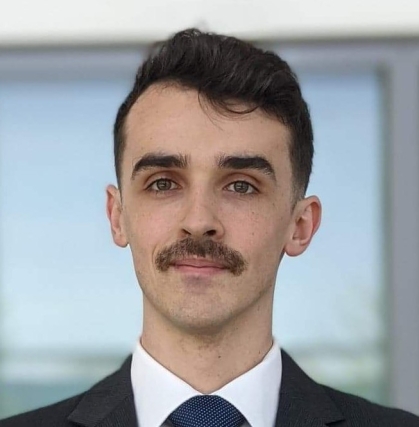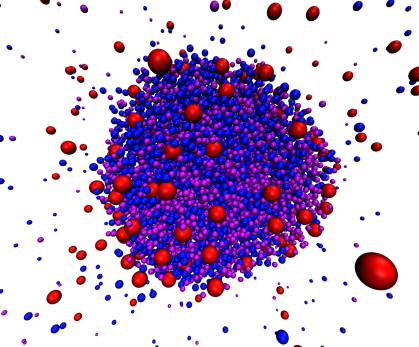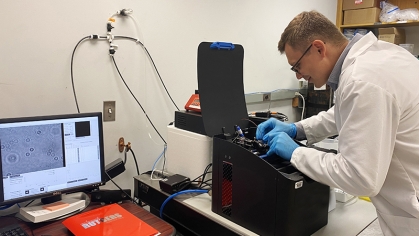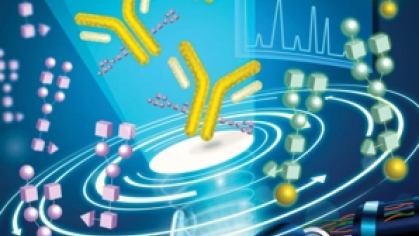CBE Professor Receives $1.25 Million NIH Grant
Five-year project to design specialized biology-based phase separating systems

The $1.25 million grant funds a five-year research project to uncover design principles for novel technologies based on phase-separating biomolecules that could ultimately aid in the development of new biotechnologies and medicines. It’s a project that Dignon describes as central to his research interests.
“I’m thrilled to have funding to conduct research on this problem, and build up my lab’s tools and expertise,” says Dignon, who joined the SoE faculty in 2022. “It is also a huge load off my mind to have guaranteed funding for the next five years, which will allow me to focus more of my time on mentoring and teaching.”
A New Field of Research
Over the past decade, the study of biomolecular condensates has emerged as a new research field that seeks to explain a long-observed but perplexing biological phenomenon by asking how some spatially distinct regions in a cell remain compartmentalized in the absence of a lipid membrane.

“Kicking off this new field of research,” Dignon explains, “was an important discovery demonstrating that these ‘membraneless organelles’ exist as phase separated liquid-like droplets in the cell – a phenomenon similar to what is seen when water and oil are mixed.”
According to Dignon, while all membraneless organelles can readily compartmentalize, many can also selectively incorporate specific molecular machines such as proteins and nucleic acid to carry out a specialized task. “An example of this is the nucleolus which promotes the assembly of ribosomes – thus effectively acting as a micro-scale reaction vessel,” he says.
Through theory and multi-scale simulations, Dignon’s project intends to help to answer the big question of how cells incorporate the right machines into the correct compartments.
Building on Past Research
In earlier work, Dignon developed a computational model to simulate protein molecules that separate into two distinct liquid phases: a protein-deficient phase and a protein-rich phase that corresponds to the environment inside a membraneless organelle.
He will apply this approach to uncover the relationship between molecular interactions and their relative concentrations both inside and outside the protein-rich phase, and ultimately
identify the principles that drive incorporation, or exclusion, of certain molecular machines in membraneless organelles.
Guiding Biotechnology and Biomedicine Development
An understanding of these principles, Dignon says, will offer a unique opportunity to guide the development of novel biotechnology and biomedicine. “For example, if we want to create a micro-scale bioreactor that catalyzes a chain of reactions, we can connect the involved enzymes to molecules that drive phase separation.
“Similarly,” he adds, “ we can aid in the development of molecules that specifically target molecular machines that operate within membraneless organelles, which is an exciting new and emerging strategy in drug design.”
It is work that will also be applicable to drug delivery. “We’ll be looking into how to encapsulate certain molecules in these microscopic compartments, and also how to switch phase separation on and off through reaction the compartment’s reaction to its chemical environment,” Dignon explains.
The grant directly supports up to three doctoral students over the next five years. Dignon reports, “I currently have two doctoral students working on problems within the scope of this grant, and have also supported an undergraduate intern through the Advanced Materials REU program this past summer. I plan to hire third doctoral student, and recruit additional undergraduates to train with my PhD students and contribute to this work.”


